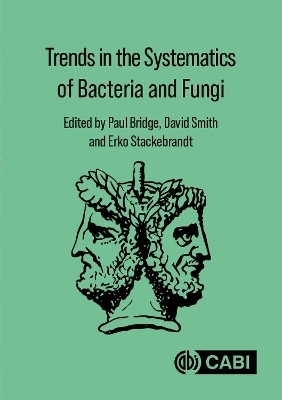
Trends in the Systematics of Bacteria and Fungi
CABI Publishing (Verlag)
978-1-78924-498-4 (ISBN)
Methods in microbial systematics have developed and changed significantly in the last 40 years. This has resulted in considerable change in both the defining microbial species and the methods required to make reliable identifications. Developments in information technology have enabled ready access to vast amounts of new and historic data online. Establishing both the relevance, and the most appropriate use, of this data is now a major consideration when undertaking identifications and systematic research. This book provides some insights into how current methods and resources are being used in microbial systematics, together with some thoughts and suggestions as to how both methodologies and concepts may develop in the future. It includes coverage of: The philosophy and changes in microbial systematics, including the relevance of names, new concepts of species, and the issues encountered with species that cannot be grown in culture. The application of new identification technologies, specifically those based on nucleic acids and complex chemo-taxonomic methods. The challenges of using published databases and other data resources in arriving at an identification appropriate to current species concepts. The practical requirements of an identification: obtaining and verifying reference cultures and data, and the type and level of identification required by different users. This book is suitable for academic researchers, scientists involved with identification or survey, microbiologists, students and extension workers.
Paul Dennis Bridge (Edited By) Paul Dennis Bridge was previously Director of Bioservices at CABI, Head of Evolutionary Biology Group at British Antarctic Survey, and Kew Chair of Mycology at Birkbeck. He has 30 years history in practical microbial systematics in agricultural and environmental programmes. Author of over 150 scientific papers, chapters and reviews and co-editor for 10 books. David Smith (Edited By) David Smith has over 48 years at CABI as Preservation Officer, Curator and latterly Director of Biological Resources and is now retired with the honour of being a CABI Emeritus Fellow. Having a long history of managing a living fungal collection; developing and managing projects on conservation and use of microorganisms; and microbiological regulatory environment particularly, the Nagoya protocol. In past roles as President of the World Federation for Culture Collections, President of the European Culture Collection's Organisation and the UK Federation of Culture Collections he has visited collections in 34 countries and helped set up and enhance collections in 19 countries. He has presented over 160 conference papers and has over 230 publications including 80 peer reviewed papers, 4 books and over 40 book chapters. Erko Stackebrandt (Edited By) Erko Stackebrandt - Former chair in Microbiology at the Universities of Kiel (Germany ) and Brisbane (Australia). Professor at the University of Braunschweig, former Director of the Leibniz-Institute German Collection of Microorganisms and Cell Cultures GmbH, Braunschweig. Has been involved in the systematics, molecular phylogeny and ecology of archaea and bacteria for more than 40 years. Author of over 700 publications, including over 60 book chapters. Edited 3 books
Chapter 1: Bridging 200 years of bacterial classification Chapter 2: Identification of fungi: background, challenges and prospects Chapter 3: Names of microorganisms and data resources to retrieve information about published names Chapter 4: Preserving the reference strains Chapter 5: Can older fungal sequence data be useful? Chapter 6: Data resources: role and services of culture collections Chapter 7: MALDI TOF MS and currently related proteomic technologies in reconciling bacterial systematics Chapter 8: MALDI-TOF MS and its requirements for fungal identification Chapter 9: The strength of chemotaxonomy Chapter 10: Microbial Genomic Taxonomy Chapter 11: Navigating bacterial taxonomy in a world of unchartered microbial organisms Chapter 12: Sequence-based identification and classification of fungi Chapter 13: Identification and Classification of Prokaryotes Using Whole Genome Sequences Chapter 14: Genomic sequences for fungi Chapter 15: What can genome analysis offer for bacteria? Chapter 16: Genomes Reveal the Cohesiveness of Bacterial Species Taxa and Provide a Path Toward Describing All of Bacterial Diversity Chapter 17: Are species concepts outdated for Fungi? Intraspecific variation in plant-pathogenic fungi illustrates the need of subspecific categorization Chapter 18: Where to now
| Erscheinungsdatum | 15.01.2021 |
|---|---|
| Verlagsort | Wallingford |
| Sprache | englisch |
| Maße | 172 x 244 mm |
| Gewicht | 1031 g |
| Themenwelt | Naturwissenschaften ► Biologie ► Mikrobiologie / Immunologie |
| Naturwissenschaften ► Biologie ► Mykologie | |
| ISBN-10 | 1-78924-498-6 / 1789244986 |
| ISBN-13 | 978-1-78924-498-4 / 9781789244984 |
| Zustand | Neuware |
| Haben Sie eine Frage zum Produkt? |
aus dem Bereich


